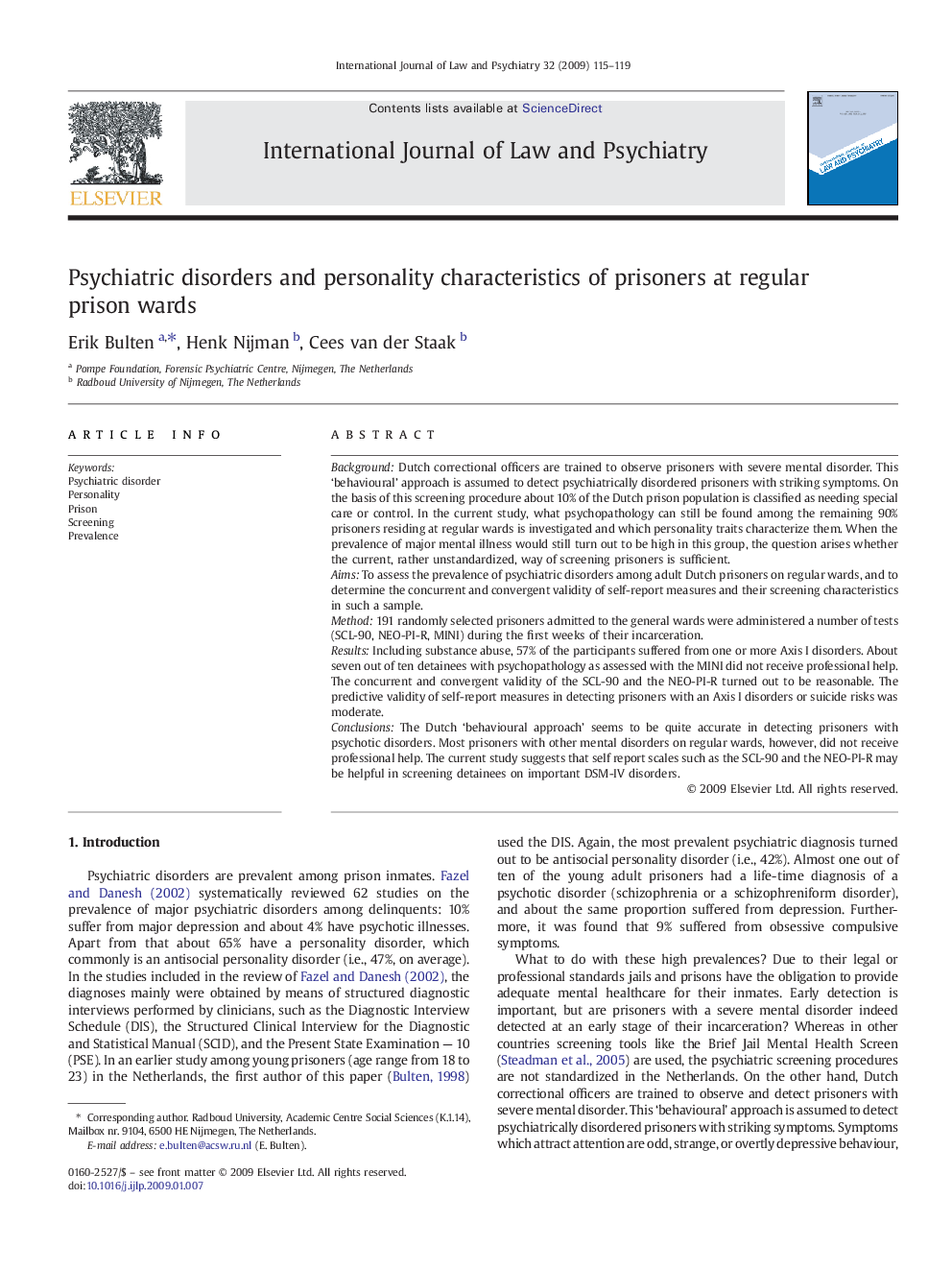| Article ID | Journal | Published Year | Pages | File Type |
|---|---|---|---|---|
| 101222 | International Journal of Law and Psychiatry | 2009 | 5 Pages |
BackgroundDutch correctional officers are trained to observe prisoners with severe mental disorder. This ‘behavioural’ approach is assumed to detect psychiatrically disordered prisoners with striking symptoms. On the basis of this screening procedure about 10% of the Dutch prison population is classified as needing special care or control. In the current study, what psychopathology can still be found among the remaining 90% prisoners residing at regular wards is investigated and which personality traits characterize them. When the prevalence of major mental illness would still turn out to be high in this group, the question arises whether the current, rather unstandardized, way of screening prisoners is sufficient.AimsTo assess the prevalence of psychiatric disorders among adult Dutch prisoners on regular wards, and to determine the concurrent and convergent validity of self-report measures and their screening characteristics in such a sample.Method191 randomly selected prisoners admitted to the general wards were administered a number of tests (SCL-90, NEO-PI-R, MINI) during the first weeks of their incarceration.ResultsIncluding substance abuse, 57% of the participants suffered from one or more Axis I disorders. About seven out of ten detainees with psychopathology as assessed with the MINI did not receive professional help. The concurrent and convergent validity of the SCL-90 and the NEO-PI-R turned out to be reasonable. The predictive validity of self-report measures in detecting prisoners with an Axis I disorders or suicide risks was moderate.ConclusionsThe Dutch ‘behavioural approach’ seems to be quite accurate in detecting prisoners with psychotic disorders. Most prisoners with other mental disorders on regular wards, however, did not receive professional help. The current study suggests that self report scales such as the SCL-90 and the NEO-PI-R may be helpful in screening detainees on important DSM-IV disorders.
